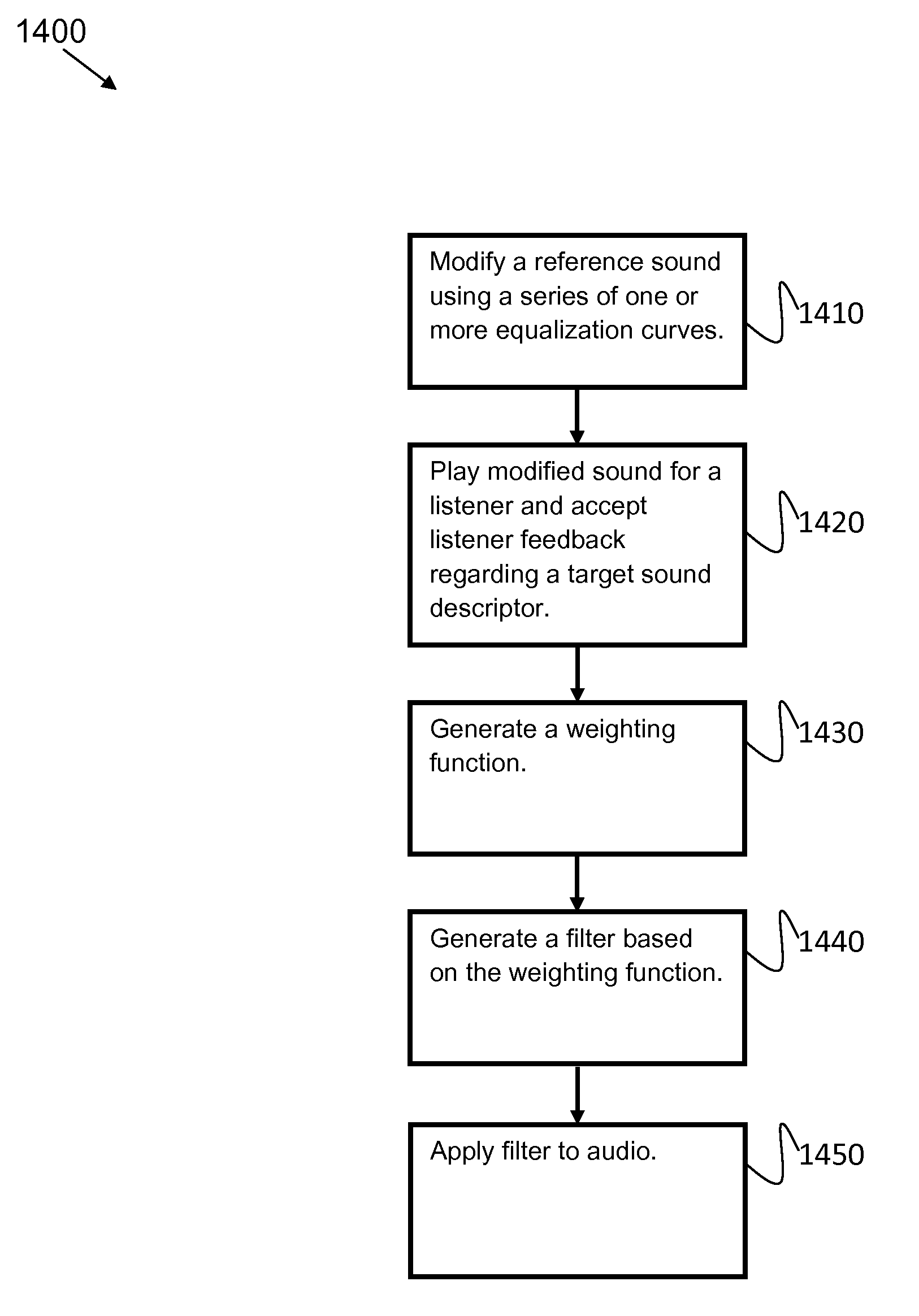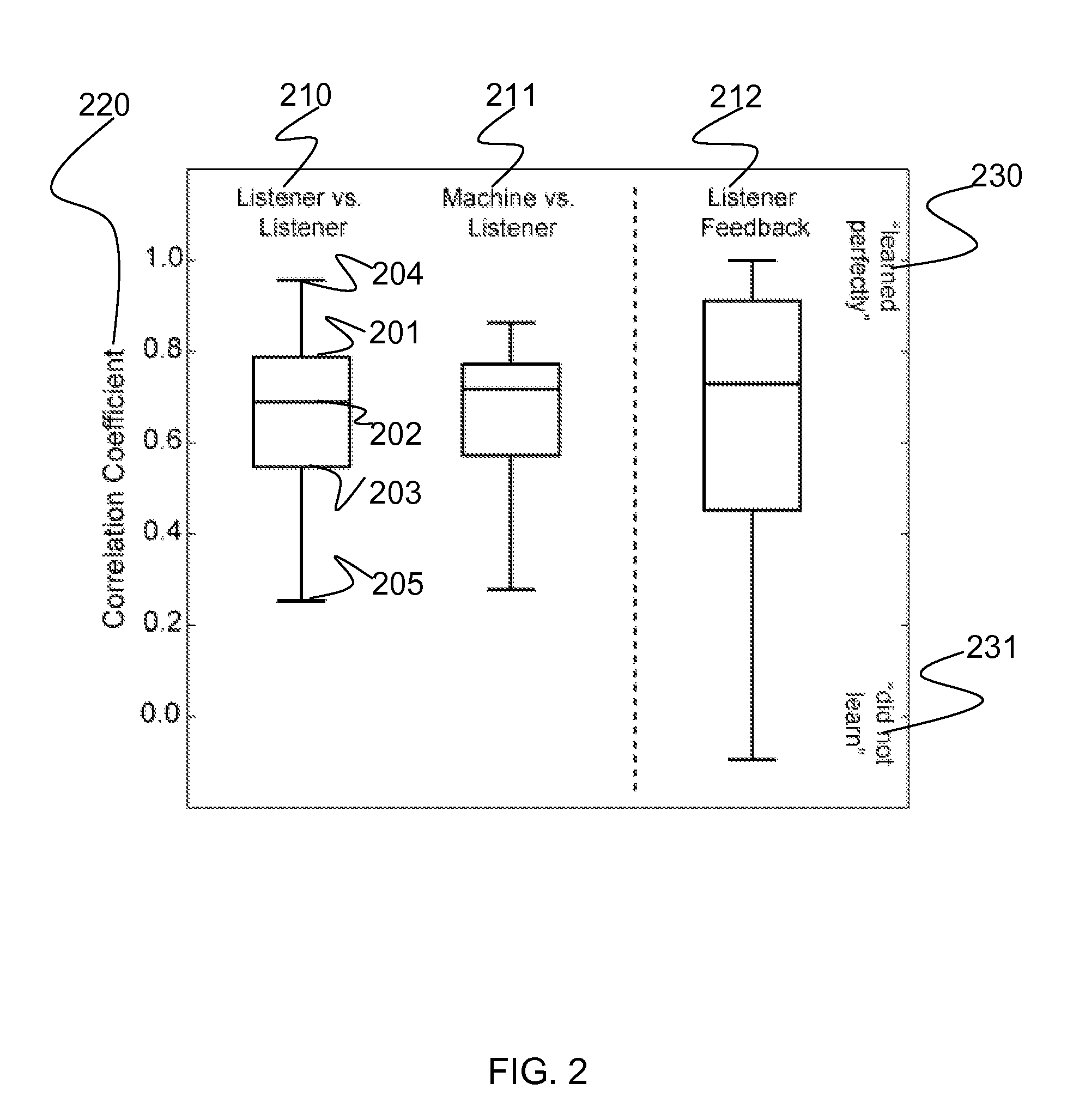Systems, methods, and apparatus for equalization preference learning
a technology of equalization preference and learning method, applied in the field of digital audio modification, can solve the problems of potential users being discouraged from using these tools, and unable to achieve the full potential of using them, and achieve the effect of maximizing the capacity of use and avoiding the disassembly and use of tools
- Summary
- Abstract
- Description
- Claims
- Application Information
AI Technical Summary
Benefits of technology
Problems solved by technology
Method used
Image
Examples
Embodiment Construction
based on user ratings.
[0023]FIG. 12 illustrates an example interface of an application that allows sound adjustments to be made on digital audio equalizers.
[0024]FIG. 13 illustrates an example calibration system to calibrate an audio device based on learned user preference.
[0025]FIG. 14 illustrates an example flow diagram for a method for listener calibration using an equalization curve.
[0026]FIG. 15 is a block diagram of an example processor system that may be used to implement systems, apparatus, and methods described herein.
[0027]The foregoing summary, as well as the following detailed description of certain embodiments of the present invention, will be better understood when read in conjunction with the appended drawings. For the purpose of illustrating the invention, certain embodiments are shown in the drawings. It should be understood, however, that the present invention is not limited to the arrangements and instrumentality shown in the attached drawings.
DETAILED DESCRIPTION...
PUM
 Login to View More
Login to View More Abstract
Description
Claims
Application Information
 Login to View More
Login to View More - R&D
- Intellectual Property
- Life Sciences
- Materials
- Tech Scout
- Unparalleled Data Quality
- Higher Quality Content
- 60% Fewer Hallucinations
Browse by: Latest US Patents, China's latest patents, Technical Efficacy Thesaurus, Application Domain, Technology Topic, Popular Technical Reports.
© 2025 PatSnap. All rights reserved.Legal|Privacy policy|Modern Slavery Act Transparency Statement|Sitemap|About US| Contact US: help@patsnap.com



